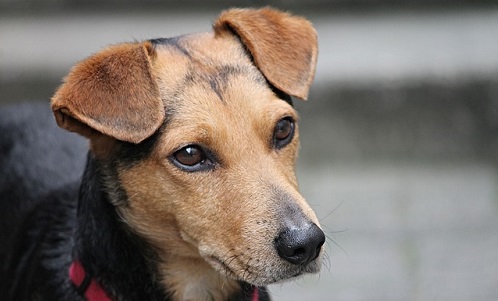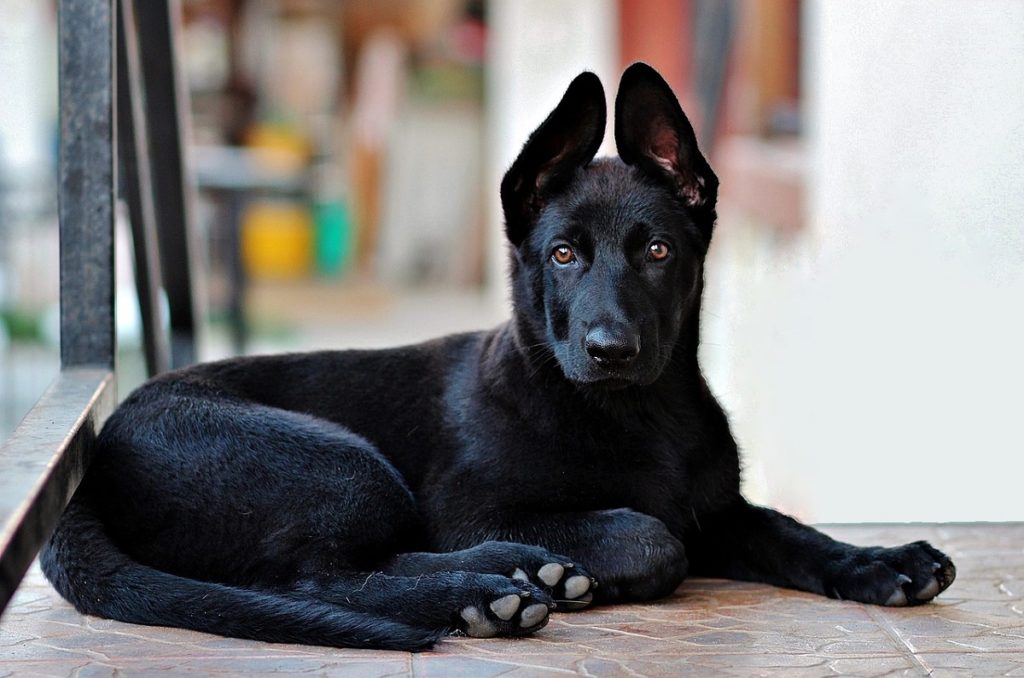Dogs cough and hack just like people if they have something stuck in their throat, and even sometimes if they sick with a cold. Then there are times you might hear your dog coughing and hacking so much that you run to check him, thinking he could be choking.
Luckily, in most cases, they’re just trying to expel something benign, like saliva or phlegm. But, what if one day they weren’t? What if one day they really were choking on something? Do you know what to do if your dog starts to choke? Do you know what steps to take or what procedures to follow?
Obviously, in a situation where a dog is choking, you’re not going to have time to run to Google and look up the closest emergency clinic. You’re going to have to take action yourself to try to remove the obstruction from your dog’s airway, or you take the risk of him losing consciousness and going into cardiac arrest.
Of course, you will still want to get them to a vet as soon as possible, but the reality is that in an emergency situation, it’s just that, an emergency. You may not have the luxury of time, especially if you want to save your dog’s life. But first, you have to determine whether or not your dog really is choking.
How Do You Know if Your Dog is Choking?
One of the most common signs that indicate your dog might be choking is coughing as he tries to force the foreign object out of his windpipe. Though dogs are a lot like kids when it comes to things they put in their mouths, unfortunately, they don’t have any universal hand signs to actually tell you they are choking. They can’t wave their paws or point to their throat and they can’t whisper or mouth words around the obstruction.
That means you have to be a bit of a detective and use some common sense. Some dogs may appear as though they are having trouble inhaling, or they might paw at their face and mouth. A good rule of thumb to keep in mind is if your dog is able to engage with you fairly normally, they likely are not choking. Another sign that your dog is in fact choking is his tongue or gums may appear to be discolored. When a dog chokes and loses oxygen, the gums can turn blue, gray, or white and be a clear indication of respiratory distress.
Additionally, if your dog is able to inhale but there is a high-pitched whistle or squeaking noise being emitted, that means there is probably an obstruction. Not to mention, dogs will present with panic or canine anxiety when choking just like a person would. That’s because it’s scary when you can’t breathe, even for dogs!
Note that if your dog loses consciousness, take action immediately and don’t hesitate, because a loss of consciousness means their airway has been obstructed for longer than a couple of seconds and time is of the essence.
What to Do if Dog is Choking
 If you determine that your dog does appear to be choking and presents with any of the symptoms and warning signs described above, the first thing to do is open your dog’s mouth and get a look inside. You want to look to see if there are any objects you can visualize or see if there is food that is trapped or lodged in his throat.
If you determine that your dog does appear to be choking and presents with any of the symptoms and warning signs described above, the first thing to do is open your dog’s mouth and get a look inside. You want to look to see if there are any objects you can visualize or see if there is food that is trapped or lodged in his throat.
Don’t forget that your dog is feeling panicked and anxious, and his behavior can be unpredictable. Approach cautiously and keep your voice and tone calm and soothing. If you can see the obstruction you can use your finger to gently sweep it out of the airway. If it’s a bit of food, it should come out fairly easily.
However, if your dog is choking on some other type of foreign object, you need to be careful. If you meet any resistance whatsoever, you need to move slowly because you could tear the inside of your dog’s throat and cause significant soft tissue damage. You also don’t want to blindly reach into your dog’s throat and pull anything that you feel out, because your dog has a unique structure with small throat bones, and you could accidentally pull a bone in their throat and cause serious injury. You should also be careful that you don’t push the object deeper into your dog’s airway if it’s lodged too far back in their throat.
Ultimately, you will want to try to get your dog to a vet as soon as possible, especially if the foreign object is stuck there or you can’t see the obstruction to remove it. Remember that with every action you take, timing is essential. Your efforts to dislodge the object from your dog’s airway should not keep you from also getting them to the nearest emergency vet clinic ASAP.
A good rule of thumb is if you can’t remove the object within a minute or two, you need to move on and get your dog to on the road. If your dog can’t breathe past the obstruction or has collapsed unconscious because of lack of air, don’t delay. Set out for the animal hospital immediately.
If you think the obstruction can be dislodged and there are two of you present, you can do a variation of the dog Heimlich maneuver to try to get your dog’s airway cleared. If you have a large dog, you can perform the Heimlich maneuver by standing behind them and wrapping your arms around your dog’s waist. Their nose and muzzle should be facing away from you.
Just like you would with a human, use your fists and place the thumb of your fists right against your dog’s abdomen in the soft part of the belly below the ribs. Use your other hand to hold your fist and then push in and up in a forward motion toward your dog’s shoulders. The movement should be quick and forceful and be done four or five times in succession.
Check your dog’s airway after the thrusts and see if you can clear anything from their mouth. Repeat if necessary, but be careful, because you can cause additional injury to your dog by doing this. The Heimlich maneuver should only ever be done on dogs in true distress.
You can also try lifting your dog into the wheelbarrow pose and shaking them. Then put your dog down and back into a standing position and tap firmly between your dog shoulder blades five times. If your pup falls unconscious, you’ll need to take the steps necessary to clear their airway and perform rescue breathing and possibly CPR.
If you have a small dog, you will want to hold the dog with their spine against your chest and their head tilted up. Repeat the steps as you would for larger dog by making a fist and putting it against the soft part of your dog’s belly just beneath the ribs. Grasp the fist with your other hand and thrust in and up four times in rapid succession. Check your dog’s airway and remove anything that you see. Repeat if needed.
A dog that is choking can be a nerve-racking situation, but if you know what to do and when and how to do it, you are armed with knowledge. And knowledge is half the battle in keeping your dog healthy and alive in an emergency situation.
What Do You Do After Your Dog’s Airway is Cleared?
You should still be sure to take your dog to the vet right away so they can be assessed for any additional damages to their body. This is especially true if your dog fell unconscious at any point and you had to perform rescue measures. You want to make sure all is well and there are no further damages that you can’t readily see.
Sometimes dogs may have injuries inside their mouth from biting their own tongue or inside their cheek and could have abrasions in the back of their throat from the foreign object they were choking on. If you had to give your dog the Heimlich maneuver or CPR, then they need to be checked for any trauma to the chest.
Keep in mind that any traumas inside your dog’s throat and mouth are painful and can take several days to heal which can make it difficult for your dog to eat properly. You can feed them a normal diet but soften it by blending it with warm water and see if that helps. Your vet may also prescribe pain medication if they think it’s warranted.
Some vets may decide to sedate in order to reduce a dog’s distress. This makes it easier for them to examine the dog’s mouth and throat for injury and makes it easier to remove any additional foreign objects in case there is anything remaining in your dog’s airway.
Preventing Your Dog from Choking
 Prevention is the best medicine. Dogs are like small children, they get into everything, especially if it smells intriguing. They will naturally want to taste it because using their nose and sense of taste is how they investigate the world.
Prevention is the best medicine. Dogs are like small children, they get into everything, especially if it smells intriguing. They will naturally want to taste it because using their nose and sense of taste is how they investigate the world.
With that in mind, you want to make sure your dog food is formulated for your dog’s size or it could pose a choking hazard. It’s also smart to monitor your dog when they are eating, just in case something happens. This is especially true if your dog is prone to eating fast and inhaling their meals.
Also, it’s smart to keep kid toys picked up because dogs love to chew on things as they play. When you get them doggie toys, make sure they are toys that do not chip or pose any choking hazards.
A Word of Warning if Your Dog is Choking
Some websites might tell you that you should use a pair of tweezers or pliers to try to remove a foreign object from your dog’s throat, especially if it’s hard to reach. However, this should never be done simply because you pose more of a risk of injuring your dog further using tools, than you do by just gently sweeping the airway with your finger.
Think about it. If your dog moves or jerks their head at all while you are in their mouth with tweezers or pliers, you could end up causing serious damage and even puncture their throat or larynx. Damage to the larynx can make it so that your dog won’t be able to breathe, and things will only go downhill from there.
Additionally, if you end up cutting or jabbing anything in your dog’s mouth on accident, the inside of the mouth bleeds a lot. So again, as a warning… if your dog is choking and you can see the object blocking your dog’s airway, just use a finger to gently sweep the object out, never use tweezers or pliers.
If you can’t see it, that means it’s too far for you to reach in there and sweep out with a finger, so don’t even try. Also, if the object is visible but seems to be stuck, don’t attempt to force it out, because you could inadvertently injure your dog doing that as well.
Ultimately when your dog is choking, the situation is very tense and stressful. You need to remain calm, think cool, and act on your knowledge, not your emotion. Your quick reaction and response time could save your dog’s life. And in every case, getting them to a vet sooner rather than later is always the best plan.




